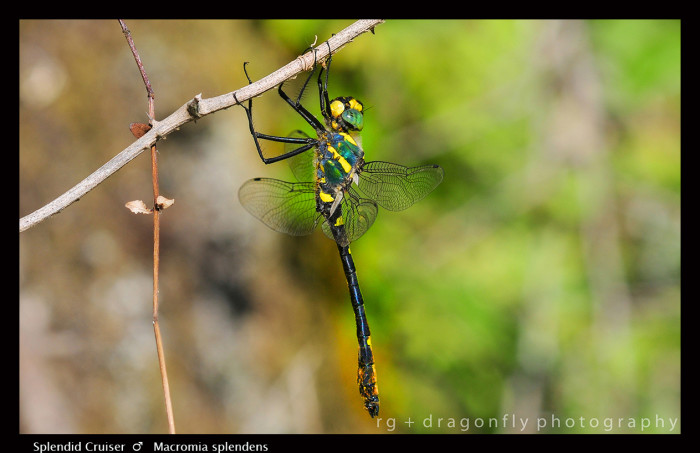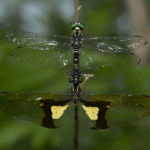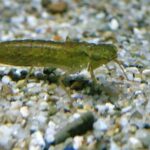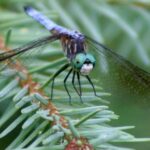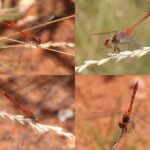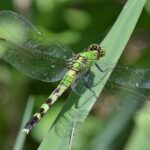Macromia splendens is a species of dragonfly in the family Macromiidae. It is found in France, Portugal, and Spain. Its natural habitats are rivers and water storage areas. It is threatened by habitat loss.
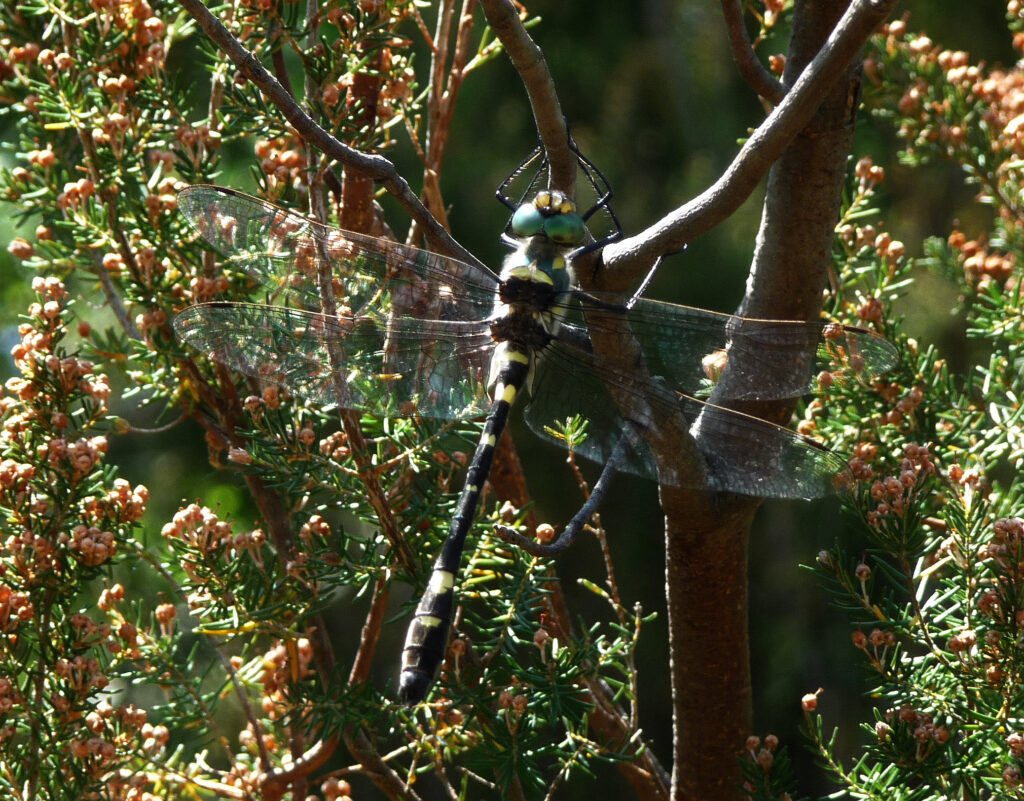
The Splendid Cruiser (Macromia splendens) ranks among the rarest and most challenging European dragonflies to photograph. I was fortunate to discover a site for this elusive species in Andalucia, Spain. Endemic to southern France and the Iberian Peninsula, it is predominantly observed during tranquil, sunlit late mornings and early afternoons. Its favored habitat appears to be serene stretches of rivers bordered by rocky banks and overhanging trees, often nestled in steep valleys. The dragonfly typically hovers just above the water, darting back and forth a short distance from the shore. Apparently tireless, it rarely pauses to alight on a branch at a convenient height for a photograph.
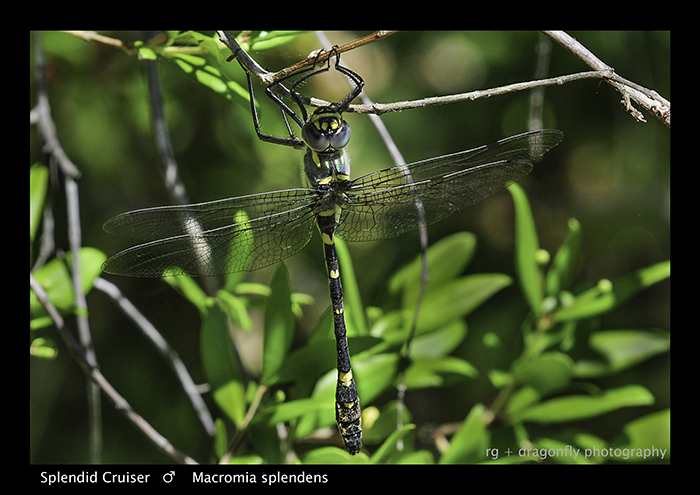
Key Identification Features
At first glance, this species bears a resemblance to the Goldenrings (Cordulegasters), as it shares a similar size; however, its body is notably slimmer and less club-shaped. The most striking feature is its large, bright green eyes. The thorax is a dark green, adorned with yellow antehumeral stripes and a crescent-shaped yellow mark in front of the forewings. When viewed from the side, a wide yellow band is visible. The abdomen is predominantly black, with prominent yellow spots. Its long, spindly black legs further distinguish this dragonfly.
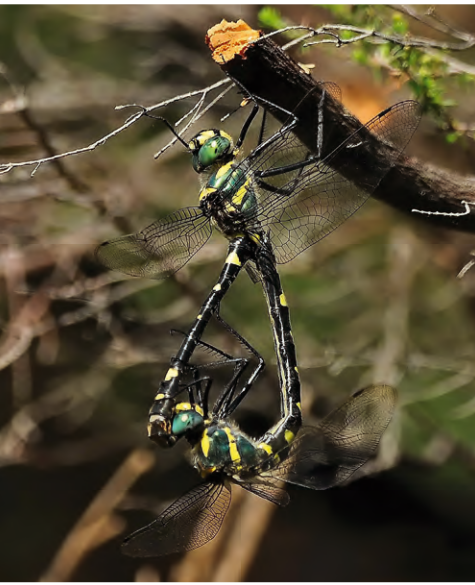
Identification
The Splendid Cruiser is the largest European cordulid, with a body length of approximately 70 mm. Its thorax displays a metallic green sheen, while the abdomen features yellow dorsal spots against a black background (Askew, 1988). The only Iberian species it may be confused with is Cordulegaster boltonii, which lacks the metallic coloration. In the wild, M. splendens is often found perching from tree branches, in clearings, or along forest paths—a behavior distinctive to this species (Cordero Rivera et al., 1999).

